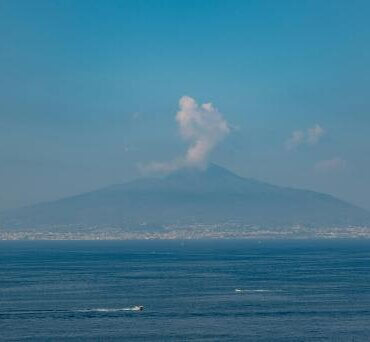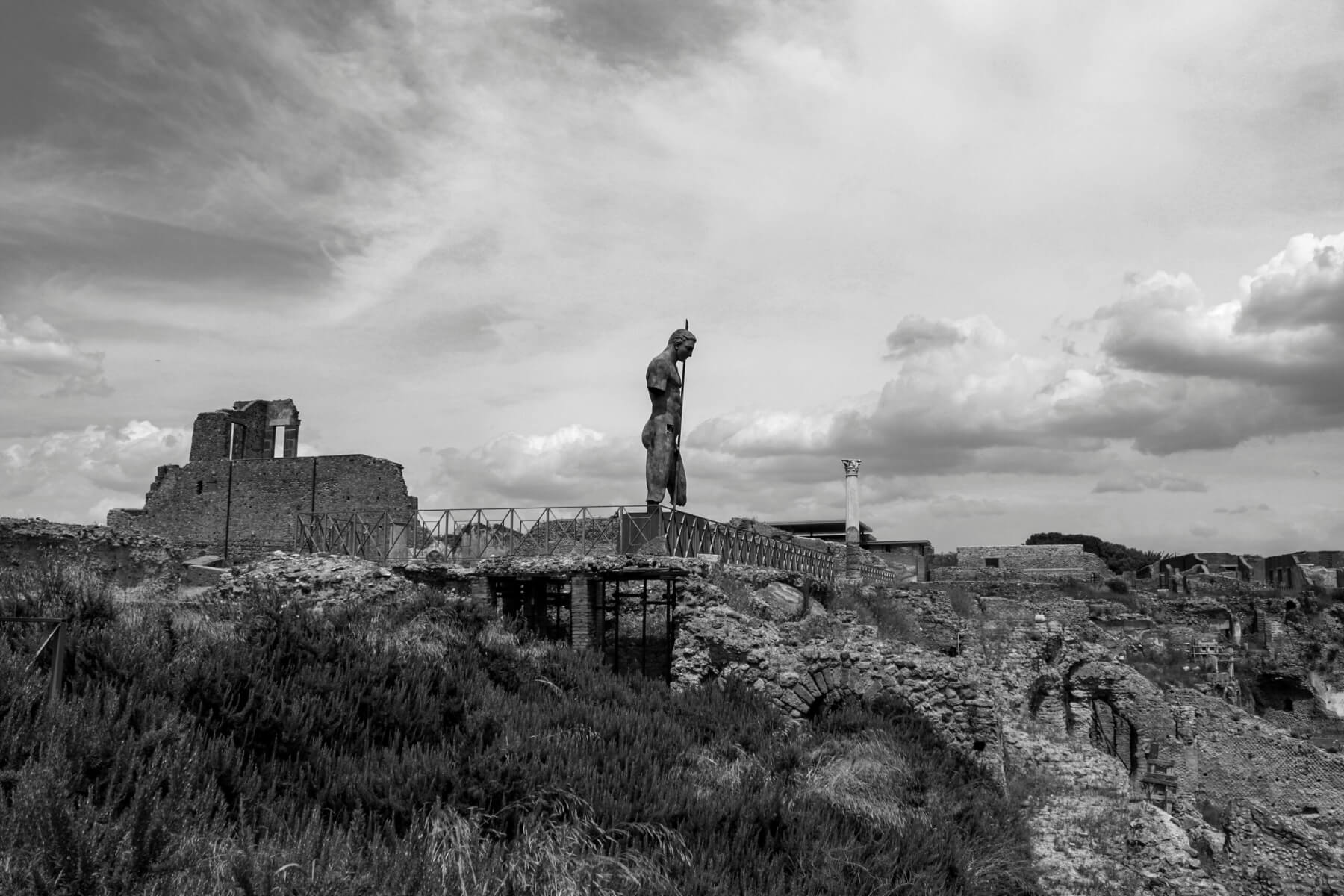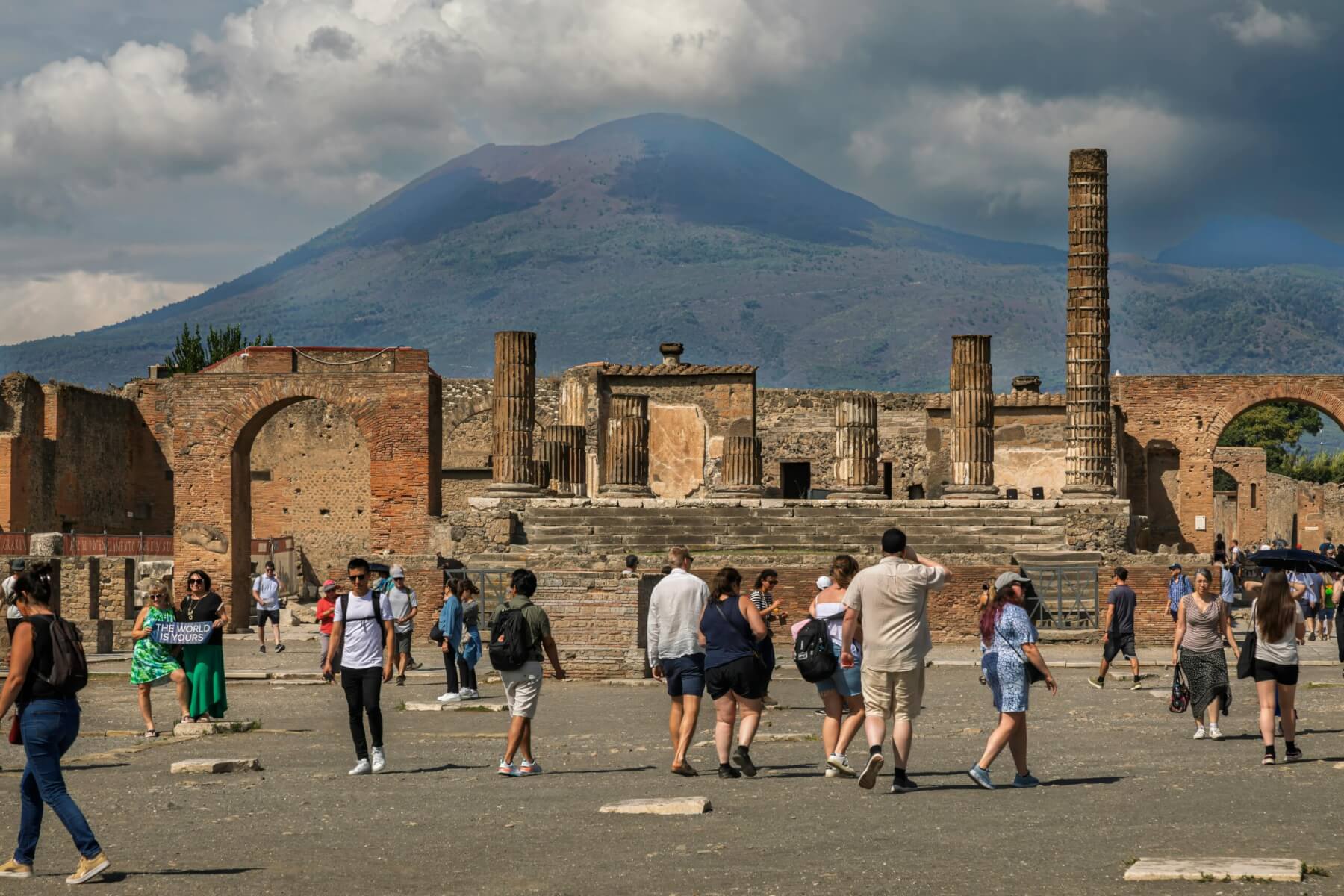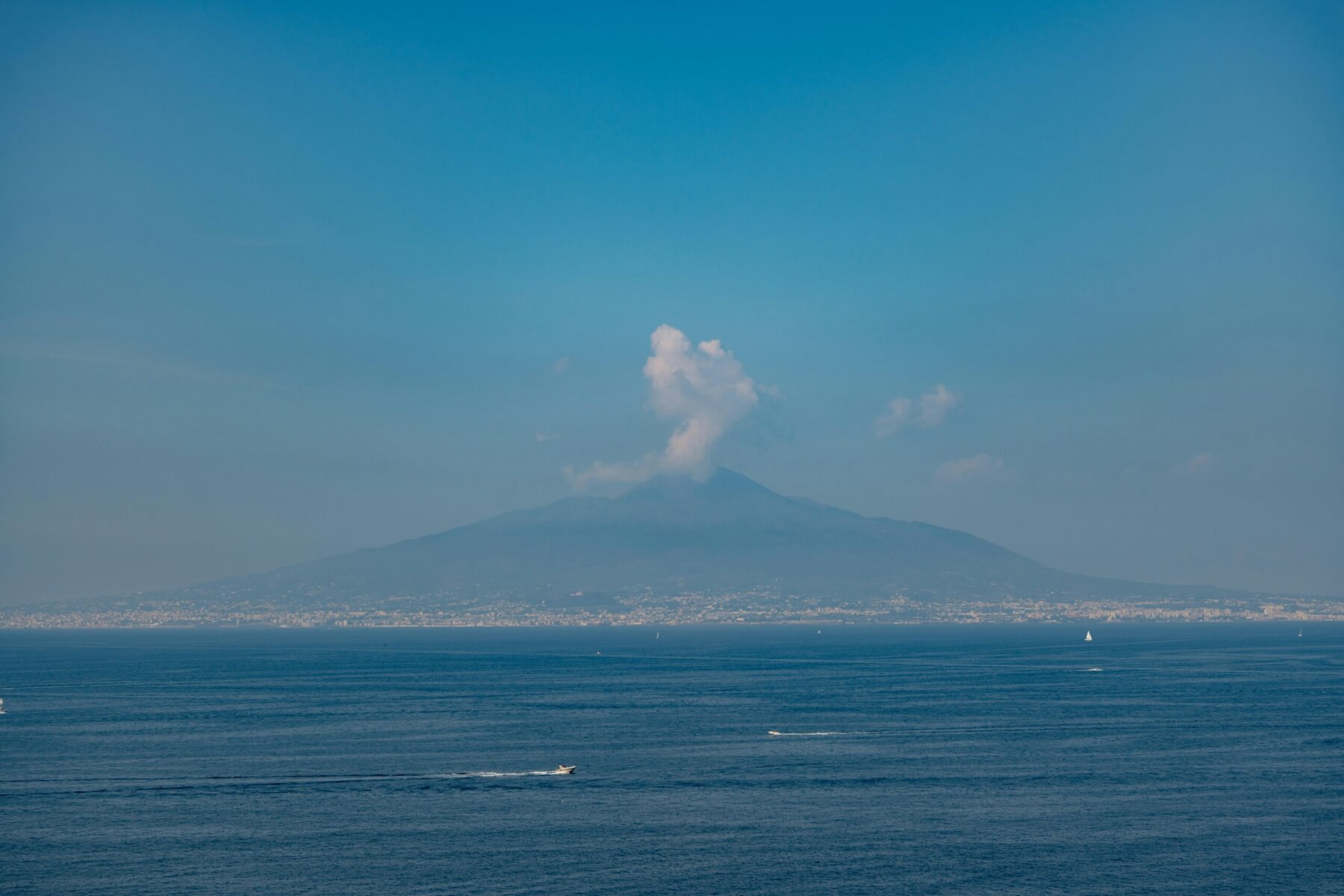
View of Naples and Mount Vesuvius from the Sea. Photo: Tibor Szabo, pexels.com
A few years ago, I stood at the summit of Vesuvius, gazing into its steep-sided crater—almost perfectly cylindrical—and feeling the awe that comes with being atop one of the world’s most famous volcanoes. But the experience was about more than just geology. The ground I could see around the volcano buried the remains of once-thriving communities.

Monumental Sculpture on Top of Ruins, at Pompei, Campania, Italy. Photo: Sebastian Harris, pexels.com
Vesuvius is best known for its catastrophic eruption, in 79AD, which destroyed Pompeii. But it wasn’t just Pompeii—other towns, including Herculaneum, were also obliterated. In fact, some say Herculaneum is an even more impressive archaeological site to visit today, due to the remarkable preservation of its structures and artefacts.

Janine Krippner
What many don’t realise is that Vesuvius sits right next to another giant: Campi Flegrei, a caldera capable of producing very large eruptions. Its landscape is dotted with cones and craters, evidence of its more frequent smaller eruptions over time.
What makes Campi Flegrei particularly dangerous is not just its eruptive potential, but its location—parts of the caldera that lie on land are densely populated. I remember standing within it, watching an ambulance struggling to navigate a tight corner. I lost count of how many turns it took. In that moment, it struck me just how chaotic and tragic a large-scale evacuation could be if… or when, the volcano erupts again.
In recent years, Campi Flegrei has entered a heightened state of unrest, appearing often in dramatic headlines labelling it a “supervolcano.” This is inaccurate. Its past eruptions do not meet the scale associated with that term. Still, even a small eruption within a crowded urban area could be catastrophic.

Tourists Explore Ancient Ruins of Pompeii, Pompeya, Campania, Italia. Photo: Alberto Capparelli, pexels.com
Returning to Vesuvius—there’s a side of its history that fewer people know. The volcano has erupted many times since it buried Pompeii, sometimes with deadly consequences. In 1631, pyroclastic flows once again surged down its flanks, killing at least 4000 people. It is also mentioned that there was deadly volcanic lightning.
And in a strange twist of history, Vesuvius made its presence known during World War II. In March 1944, it erupted again, damaging a nearby U.S. airbase. Sergeant McRae recorded the chaos in his diary: “At 8am all hell broke loose. Black stones of all sizes, some as large as a football, fell in great quantity, completely covering the ground, breaking branches from trees, smashing through tents to break up on their floors, tearing through metal, fabric, and Plexiglas of the airplanes.” He counted the total loss at 88 aircraft.
Photos of that eruption show towering ash plumes, and the larger rocks McRae described are ballistic ejecta – chunks of rock blown out at dangerous speeds and often high temperatures, usually landing within several kilometres. For a world already deep in the chaos of war, Vesuvius added another layer of destruction.
Vesuvius is a striking example of how much remains overlooked about volcanoes. The most dramatic eruptions tend to capture all the attention, but there is far more to learn from the forgotten stories, evidenced by the layers of ash and rock around them.
These are not just geological curiosities, they are part of the landscapes we live in, part of our history. To truly understand volcanoes is to look beyond the spectacle and into their full, complex lives.

View of Naples and Mount Vesuvius from the Sea. Photo: Tibor Szabo, pexels.com








